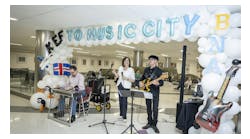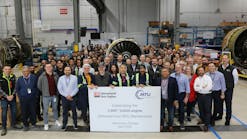Flying an ultralight aircraft doesn't require a pilot's license, registration or - in Illinois, anyway - the use of a restricted landing area.
Despite this liberal policy, flying is flying, and it's not a good idea for the uninitiated to attempt to operate one of these single-seat planes that resembles a go-kart attached to a hang glider until they've spent some time in the co-pilot seat of a similar aircraft.
"We highly recommend training of some sort," said Dale Rust of the Illinois Department of Transportation Division of Aeronautics.
Therein lies the problem. Because of policy changes by the Federal Aviation Administration, there is no longer anyone in the Springfield area who can legally train new ultralight enthusiasts how to safely operate the aircraft.
Under FAA regulations, to qualify as an ultralight - and thus be exempt from registration and licensing requirements - the aircraft must weigh no more than 254 pounds, have a fuel capacity of five gallons, have a maximum speed of 55 knots and carry a single seat.
For years, Tommy George offered ultralight flight training at his privately owned Tommy's Airpark in Edinburg near Lake Sangchris.
George used a training aircraft that looked, sounded and handled like an ultralight. But because it exceeded the weight limitations and had the necessary second seat for both a student and experienced pilot, it technically fell outside of the FAA's exemption criteria.
The plane, and others similar to it, also didn't fall into the category of general aviation aircraft, such as the Cessnas and Pipers that require registration and a pilot's license to operate. Ultralight enthusiasts and the organizations that represent them wanted the situation to be rectified.
"They decided to approach the FAA so these guys weren't flying illegal," George said.
The original objective was to create a category of planes that weighed less than 997 pounds and maintained the exemptions.
But eventually, as more parties jumped on board and used their influence to advance their own interests, that weight limit grew to more than 1,300 pounds. This higher weight limit, which includes airplanes that in no way resemble ultralights, was eventually adopted by the FAA and labeled as light-sport aircraft.
The new category required that planes be registered, and pilots and instructors be licensed.
"You can't train in experimental airplanes, so they gave us the exemption to let us use them as trainer planes," George said of his ultralight-like two-seater. "When this light-sport thing got passed, they abolished the exemption."
George is a licensed pilot. He has logged more than 1,600 flight hours in an ultralight, many of them spent training others how to fly. Yet because he lacks an instructor's license, he can no longer offer this service. It frustrates him to see the hobby fall victim to regulation.
Rust, who works with the Illinois Ultralight Advisory Council, acknowledged that it is more difficult to find ultralight training in central Illinois since the FAA's new rulings. Anyone seeking assistance will probably be directed to an instructor flying one of the heavier planes in the light-sport category, a situation that George finds absurd and dangerous.
"That guy is going to have an aluminum or fiberglass airplane that flies over 100 miles an hour. Which is ridiculous because you're going to fly an ultralight that goes 45 miles an hour and they're making you learn in a 100-mile-an-hour airplane," he said.
George spends less time in the air these days. Where he once would log more than 100 hours annually when he was offering training, he's now down to about 30 to 40 hours.
"We're kind of in limbo. The enthusiasm has dwindled because there are no instructors. I've talked to the FAA. They know where I'm coming from, but they say their hands are tied and we need to go to our congressman," he said.
Getting off the ground
An ultralight aircraft club that George helped to start, the Midwest Ultralight Crophoppers, is down to about 14 members. There just aren't as many enthusiasts moving in to take the place of the older fliers when they hang up their wings. But the dream of flying is still capturing people's imaginations.
Morgan Russell's love of flight began at a young age, when he would build model airplanes. He continued to fly radio-control planes into adulthood, and as he got older, the model planes got bigger and bigger.
"Eventually I just said, 'I want to get into one of these,'" he joked.
About six years ago, Russell, now 50, began taking lessons to receive his pilot's license. He wasn't able to finish the training, but it did give him enough background and confidence to take up ultralights last year. His confidence wasn't completely shared by his family and friends.
"Most of them thought I was kidding. My wife wasn't too thrilled, but she knew it was something I've wanted to do for a long time. She's been mostly supportive. She went with me to buy the plane, so that helped," he said.
Russell spent just under $7,000 for his used aircraft. He conducts thorough safety checks on it before each flight. His two-cycle engine requires a fuel mixture of gas and oil, but because the alcohol in the gas can cause it to separate from the oil and stall the engine, he's careful not to mix it until just before takeoff. Safety is always foremost on his mind.
"Weather isn't much of an issue for me because I don't fly unless it's really calm and really, really nice. I'm not headed anywhere, so I'm just not going to go up if it's at all questionable," he said.
It may not be as busy as it used to be at Tommy's Airpark - save for an annual fly-in of all kinds of aircraft the weekend before Labor Day. The public is welcome, and Tommy George will be happy to see everyone.
He just wishes he could teach them to fly.





